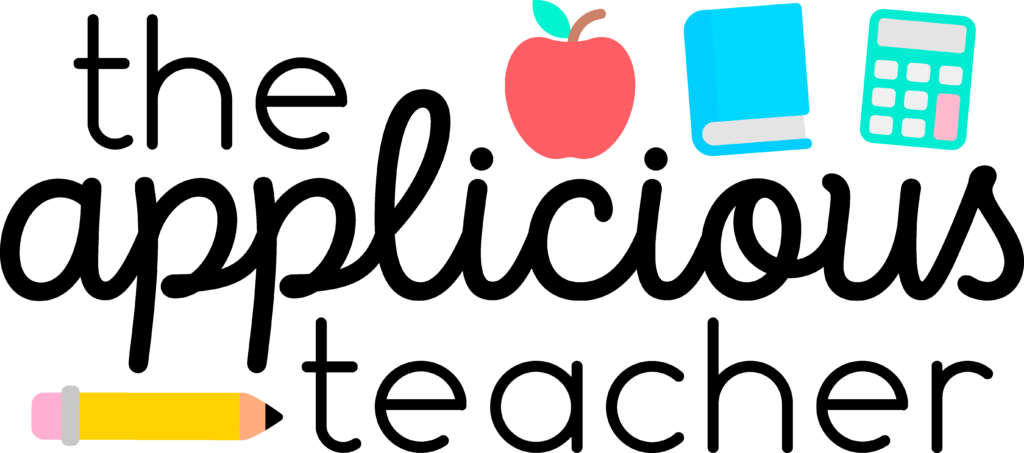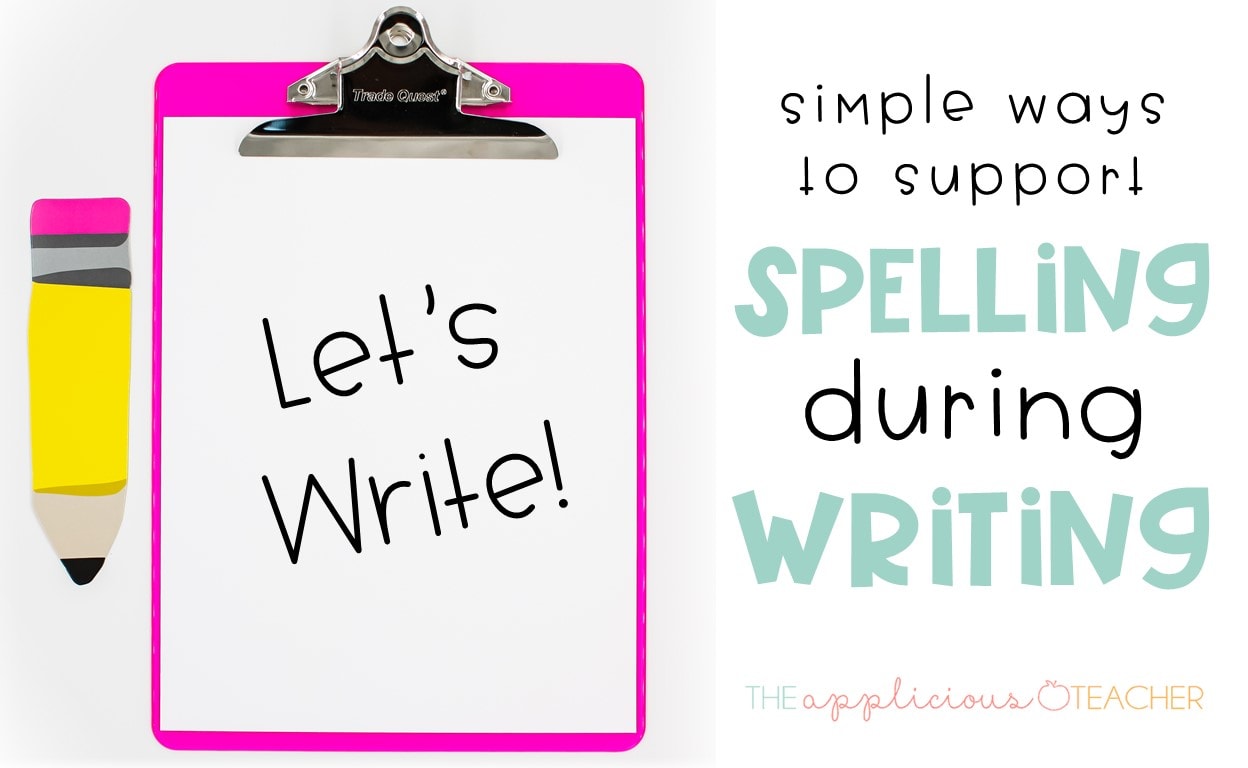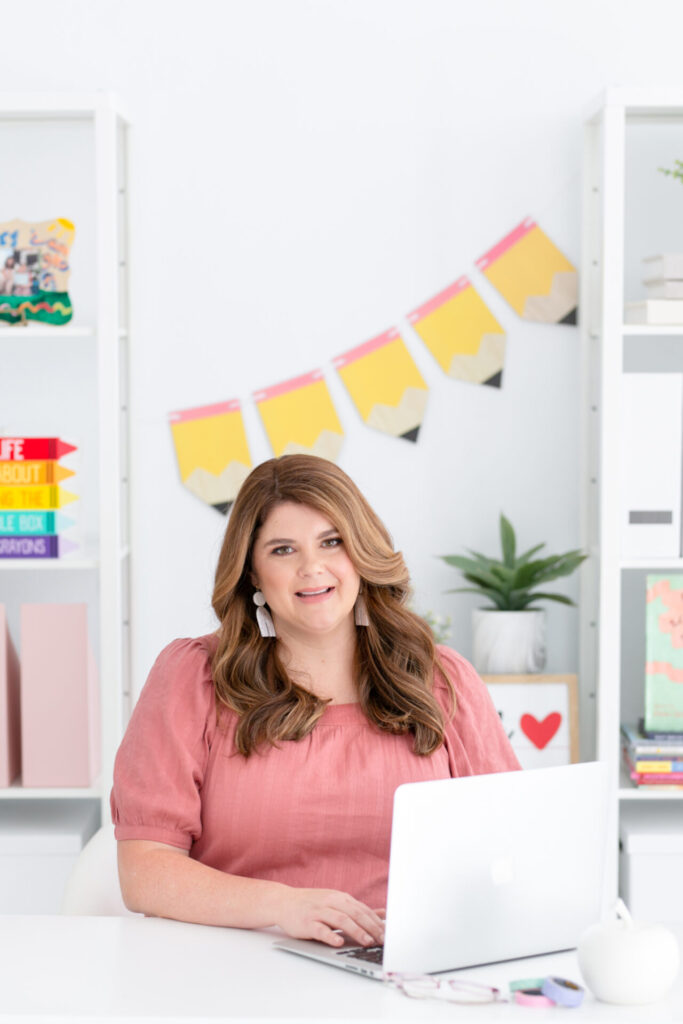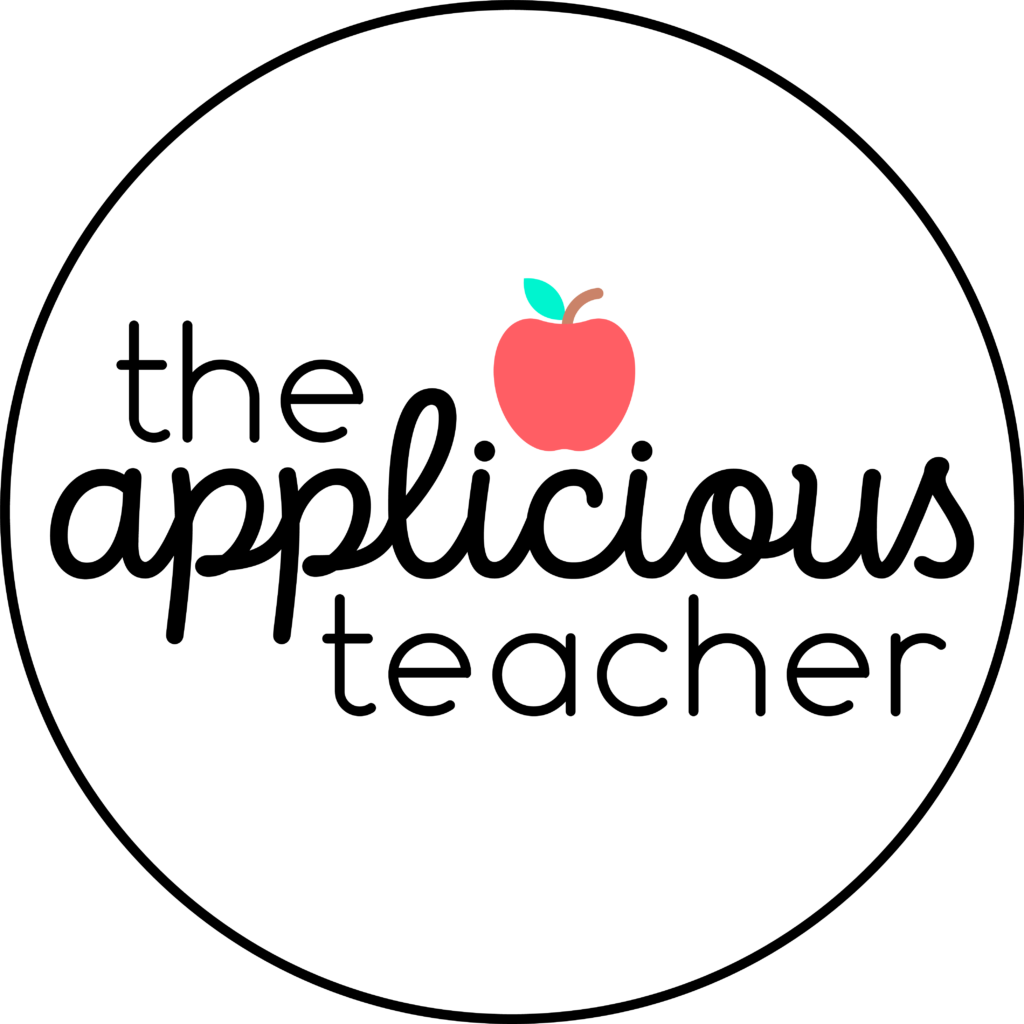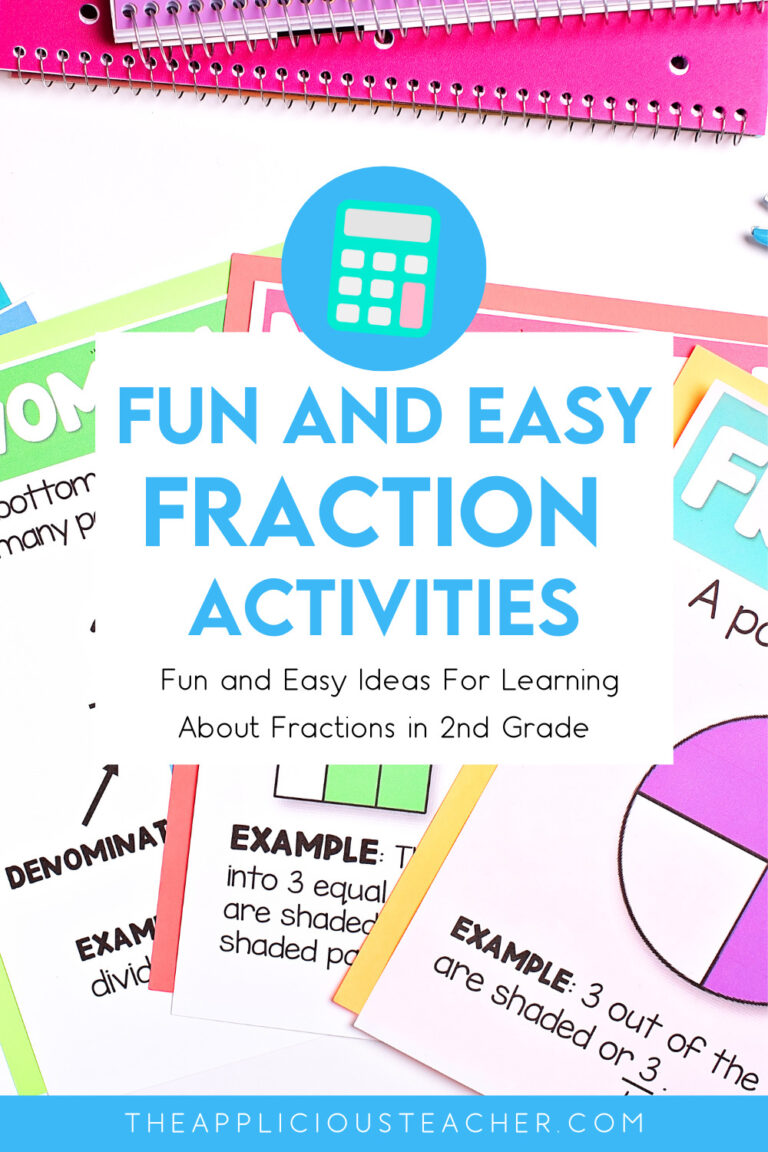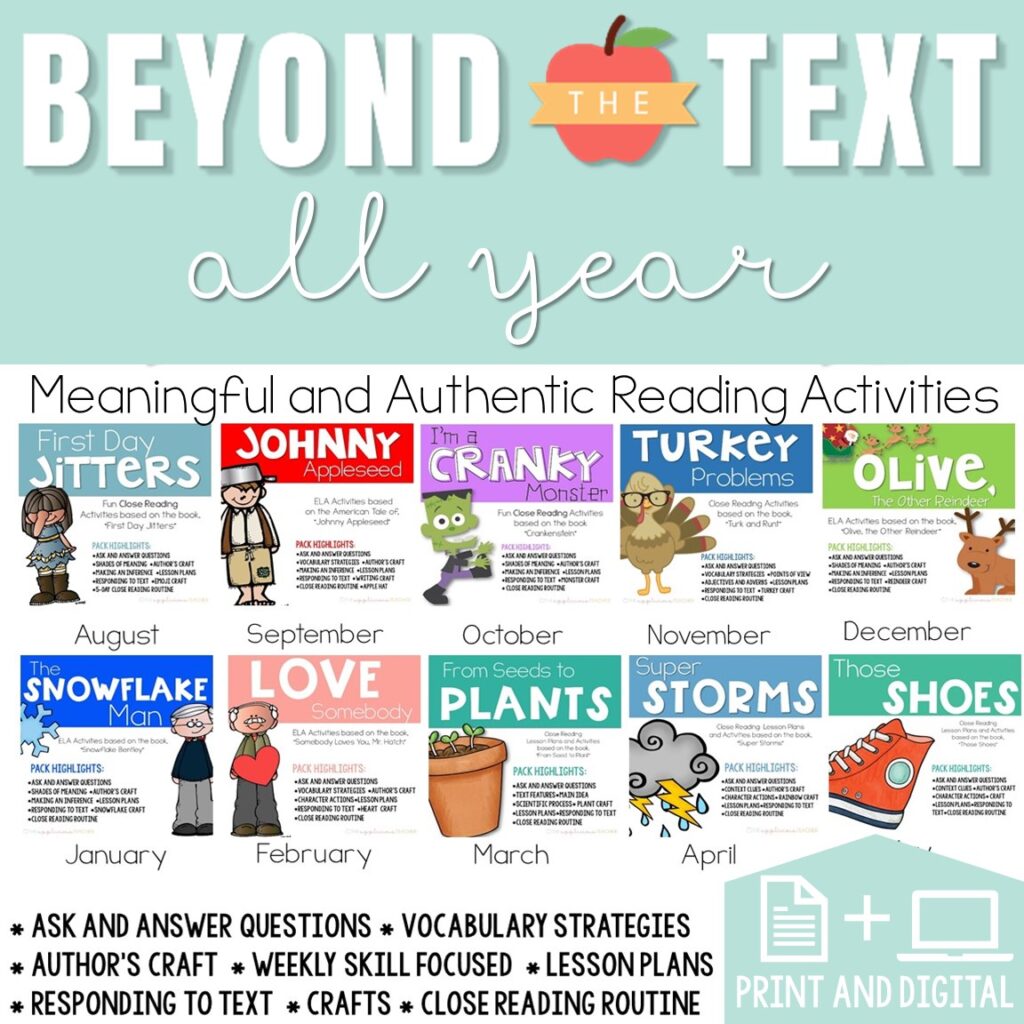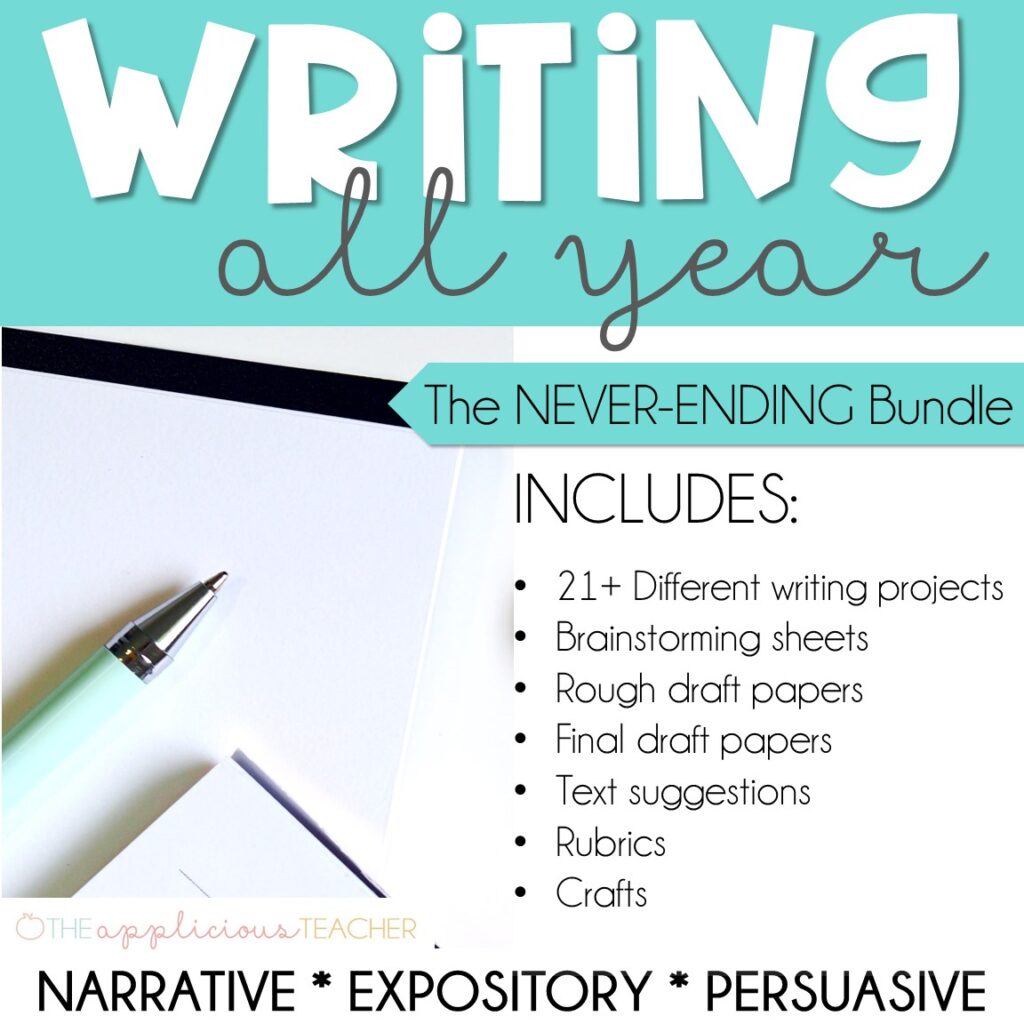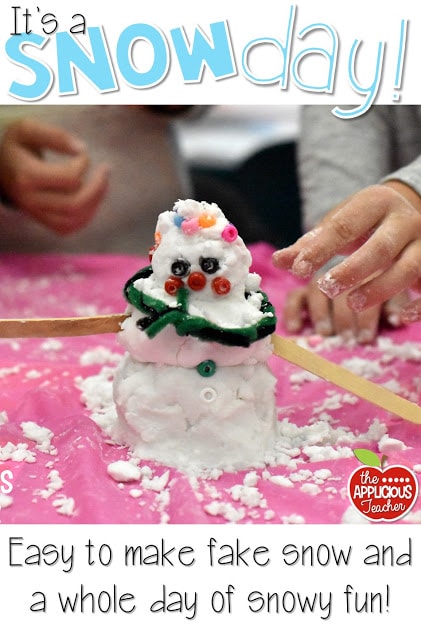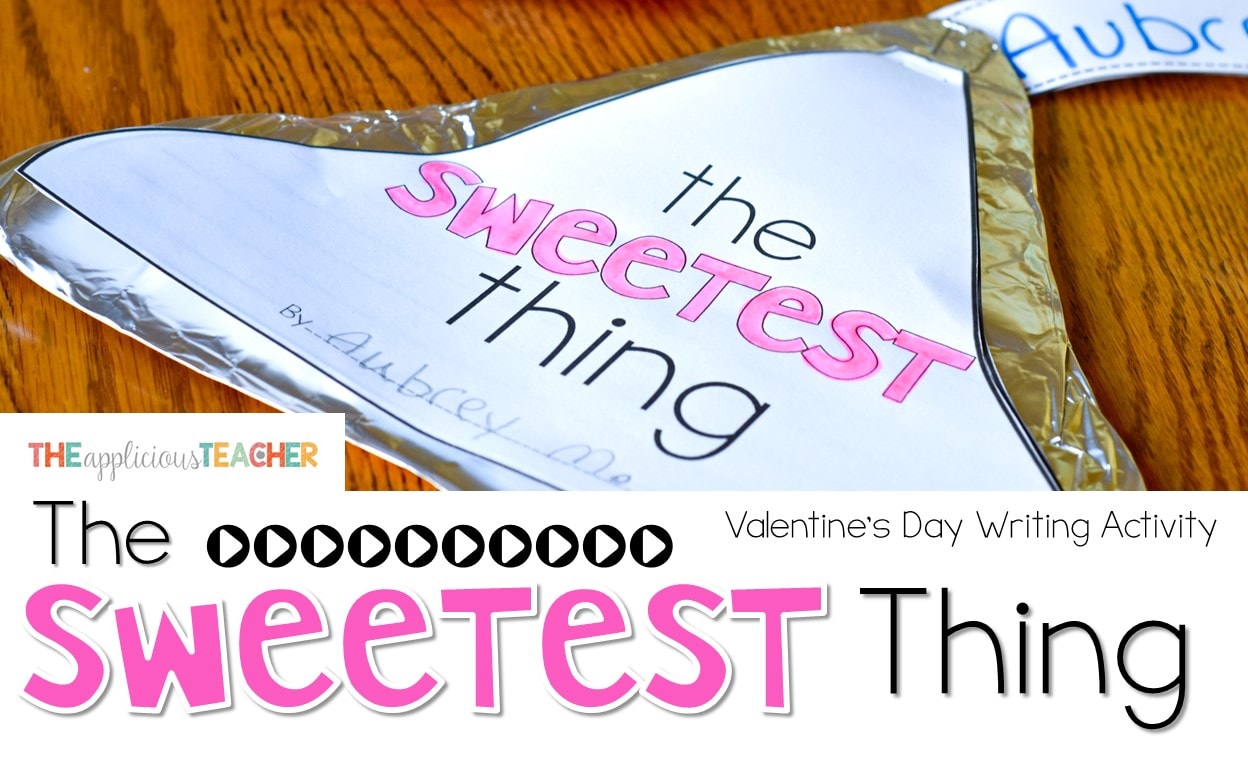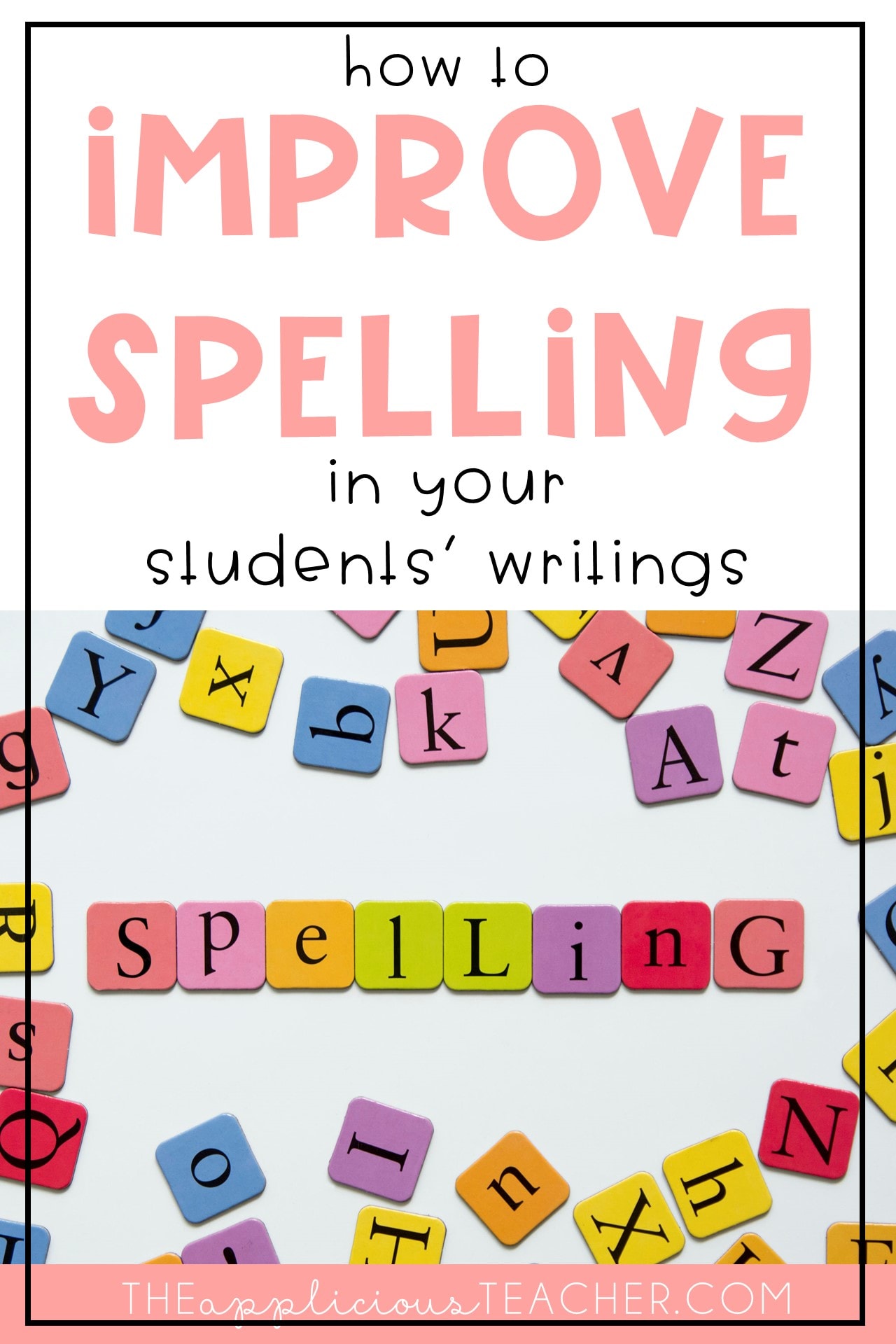
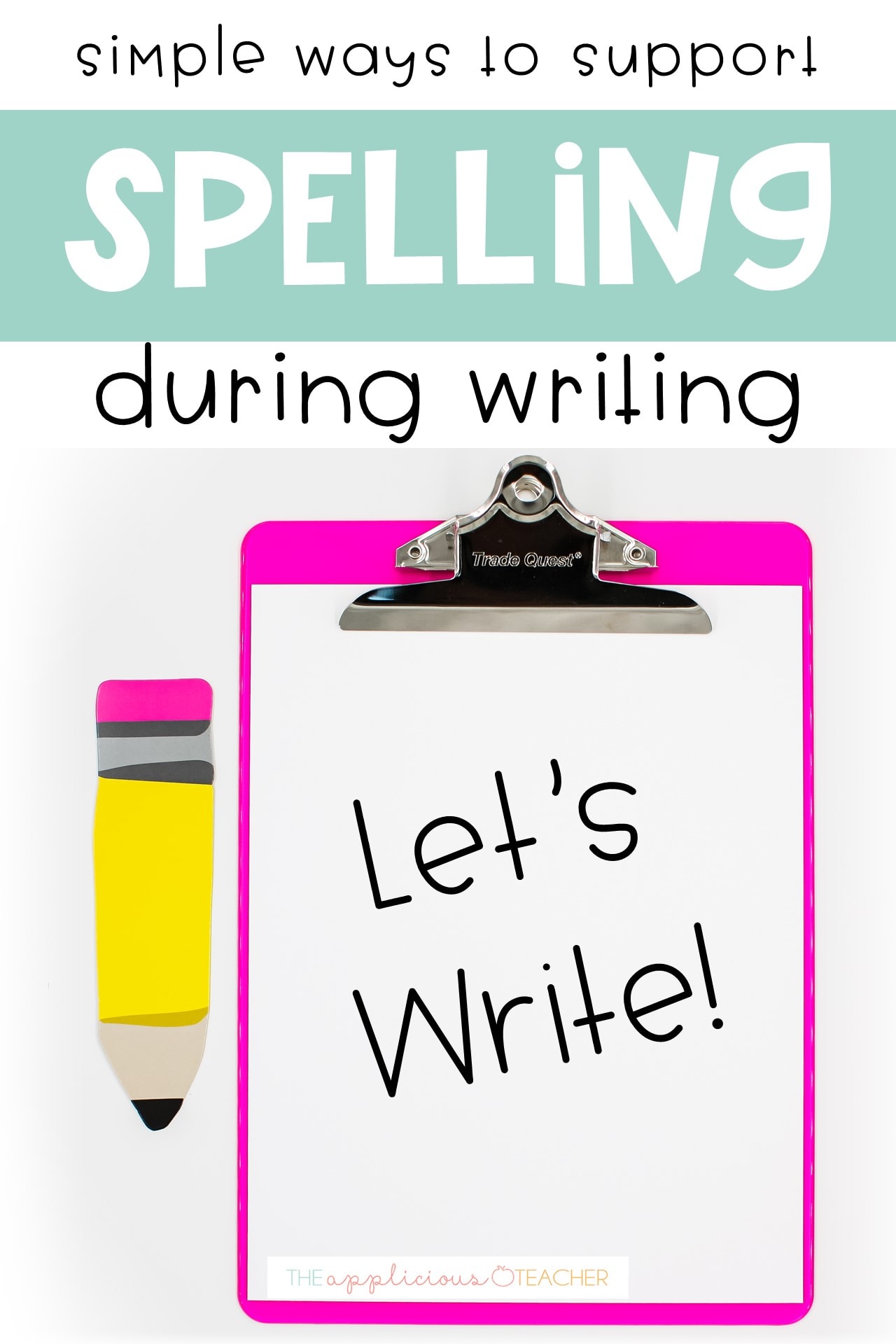
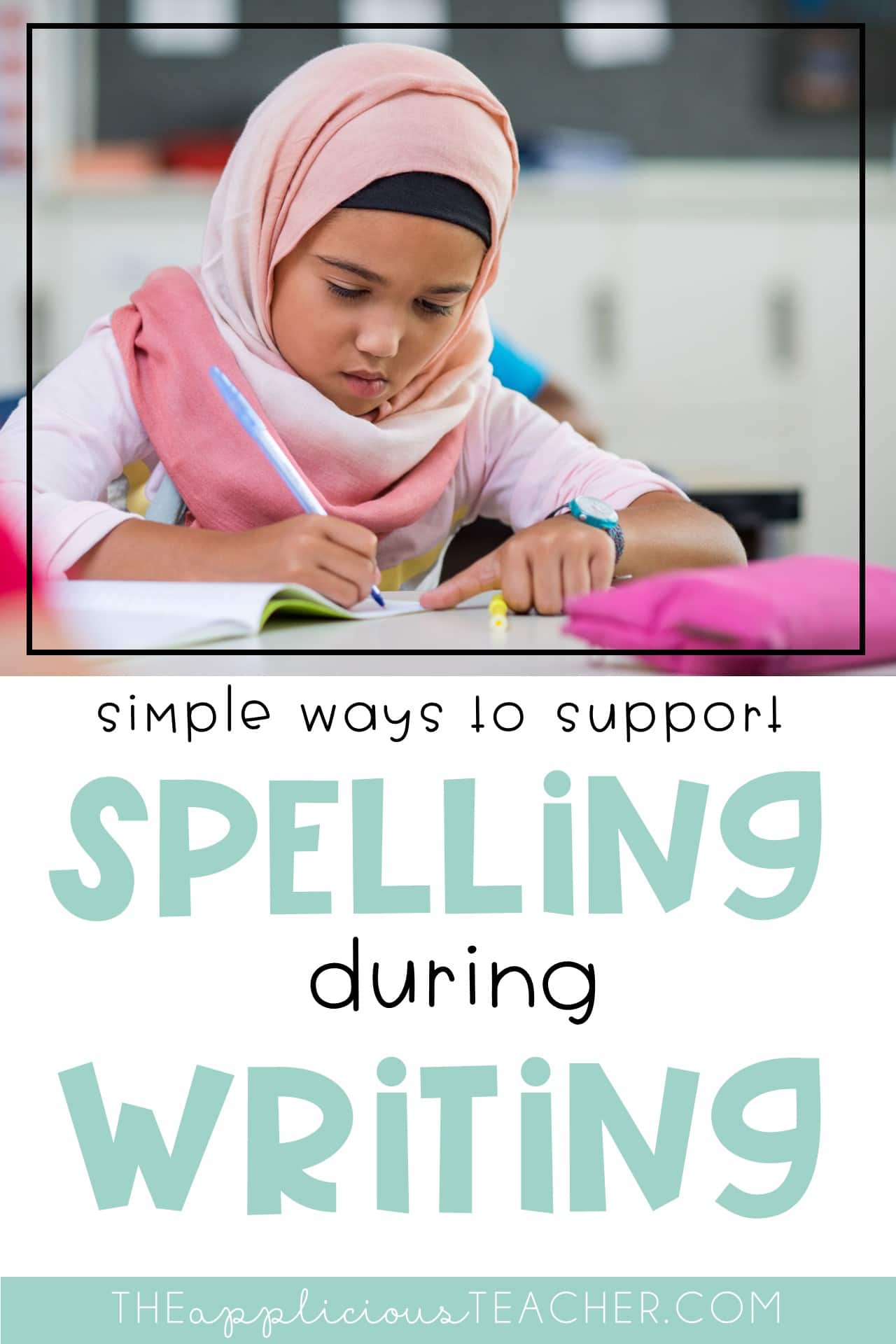
Teaching writing is a challenge. Then add spelling into the mix, and it’s a whole other level. How can you support students’ spelling while they write? I’m sharing simple strategies you can use in your classroom (literally tomorrow!) to help support spelling during writing.
My hands were sweating… it was almost my turn. Just two more people. Now, one… My turn. My mind flashed blank. My teacher repeated the word. I tried to sound it out. “E?” I shouted a little too loud. My teacher let out a big sigh. “No, you’re out,” and I sat down and buried my head into my arms.

See, in fourth grade, I was a terrible speller. I just didn’t get it. It wasn’t until 5th grade that I started to make the transition from phonetic spelling to conventional spelling (I was a late bloomer).
But teacher friend, your students don’t have to suffer the same consequences. And you don’t have to suffer through feeling like you failed your students as they work to make their conventional spelling transitions.
Although each student will eventually make the transition to conventional spelling, there are some things you can do right now (Yes! Like right now!) in your classroom that will support your students’ spelling while they write.
Stages of Spelling Development
Before we jump to those things you can do, let’s take a trip back to teacher college for a sec and review the different stages of spelling. (Cue floaty harp music.)
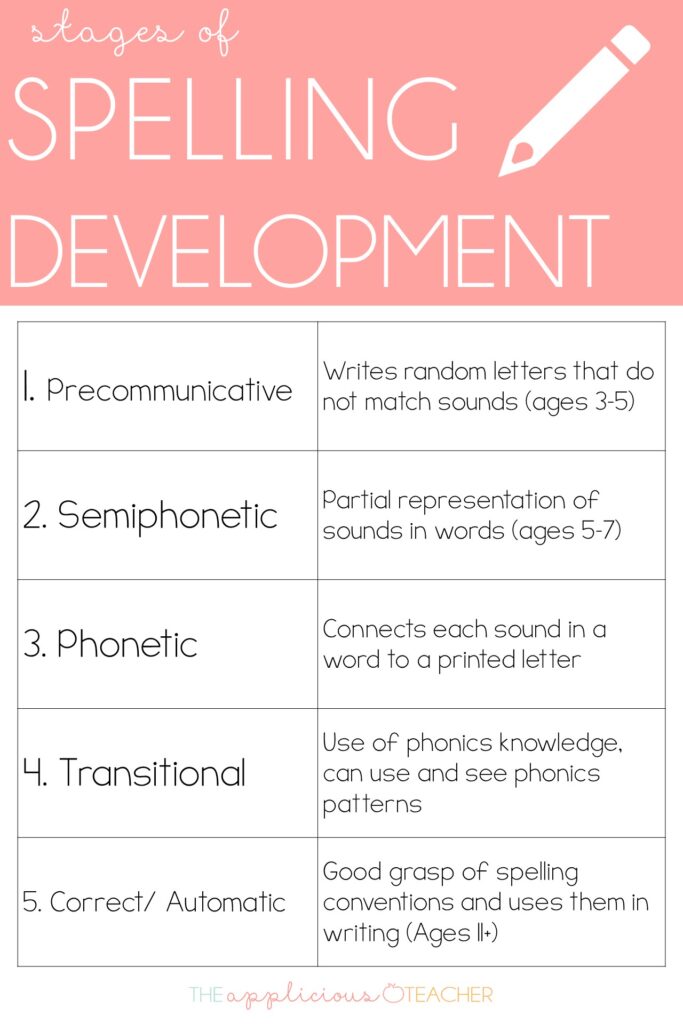
I’m not going to go through every single stage here because the graphic above shows you how most students move through the stages of spellings. #Teamdontreadtheslides
So here are the cliff notes: Students start in the precommunicative stage around three, and by the time they land in 2nd grade, they’re somewhere between phonetic-transitional-correct-or conventional spelling.
Most students in your 2nd-grade classroom are in the transitional stage. They can identify phonics patterns and can use those to help them write other words. But this post isn’t about teaching spelling. It’s about writing. So the question is, how can we encourage our students to use these spelling patterns when writing?
Ways to Support Your Students as They Transition From Phonetic to Conventional Spelling
Let’s look at some things you can start doing in your classroom to support your students.
1. Word Wall (digital ones work too!)
One of the simplest things you can do is to provide your students with a word wall. So much of spelling is visual, so displaying words allows students to spot check their spelling against a visual guide. Fill your word wall with sight words that are appropriate for your grade level, the most commonly misspelled words, and any other important words your students will need to know.
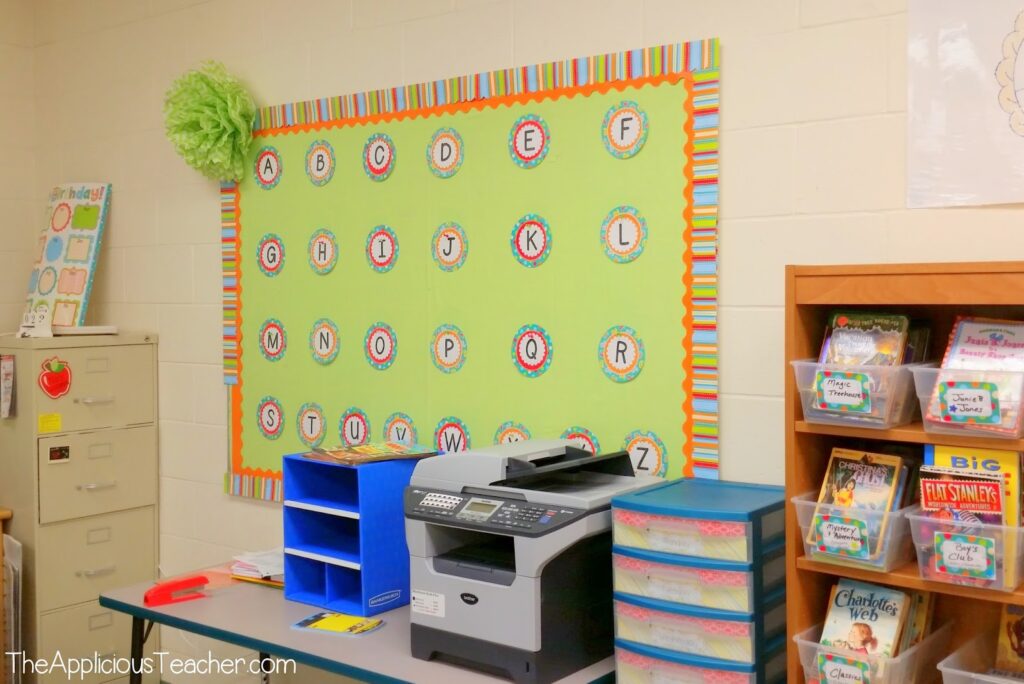
This can work in a distance learning classroom too! Use a digital word wall like the one The Techie Teacher shares here!
2. Reference Poster of Content Specific Words
This one teeters on vocabulary building, too. Each time you introduce your students to a new theme or unit, keep a running list of new words that are associated with that category or theme.
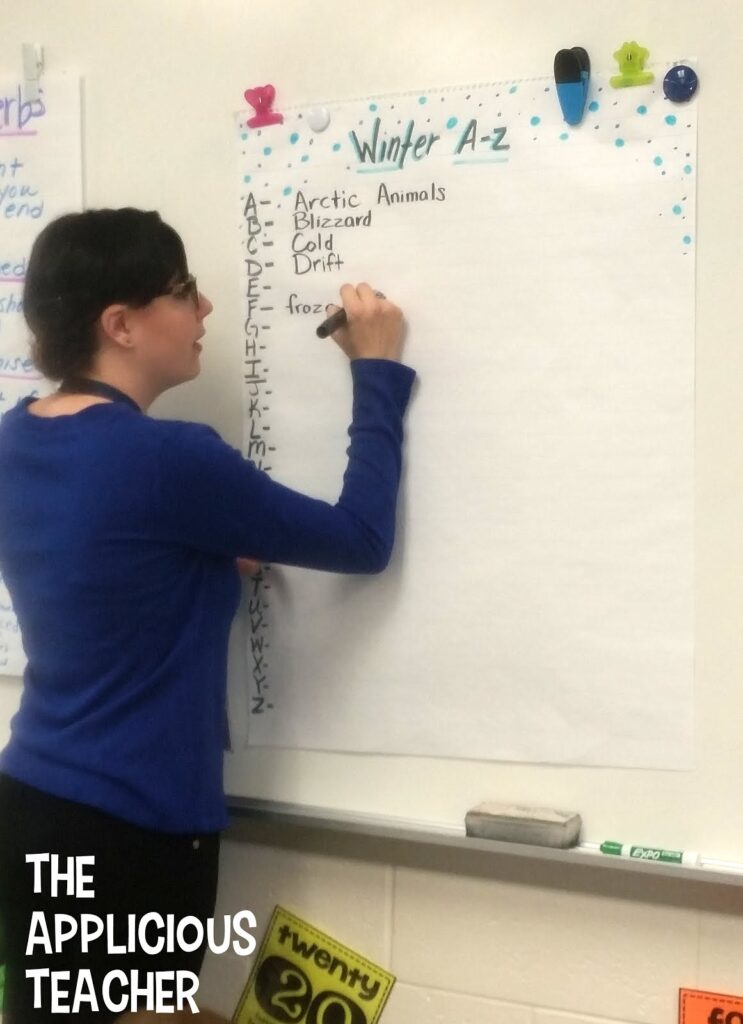
A perfect example is an A-Z list of words. An A to Z list encourages students to think of words that begin with different letters and are associated with a specific topic or theme. We used this method when we were learning about the Arctic. Not only did it help build vocabulary, students referenced it often during our writing time.
3. Phonetic Posters
This one allows you to dig into some resources you probably already have. Most reading series or reading intervention programs include phonics rule posters. A simple way to support your students’ spelling while they write? Make sure these posters are displayed and that you are referencing them when you are modeling sounding out words or when students ask.
We used the SIPPS phonics intervention program at my previous school district. I liked that I could display all the posters the program came with, but if you’re lacking space (or don’t have access to this program) check out these posters on TPT!
4. Use a Word Box
Working on a writing project where students should be using content-specific vocabulary in their writing? Then this tip is perfect for you!
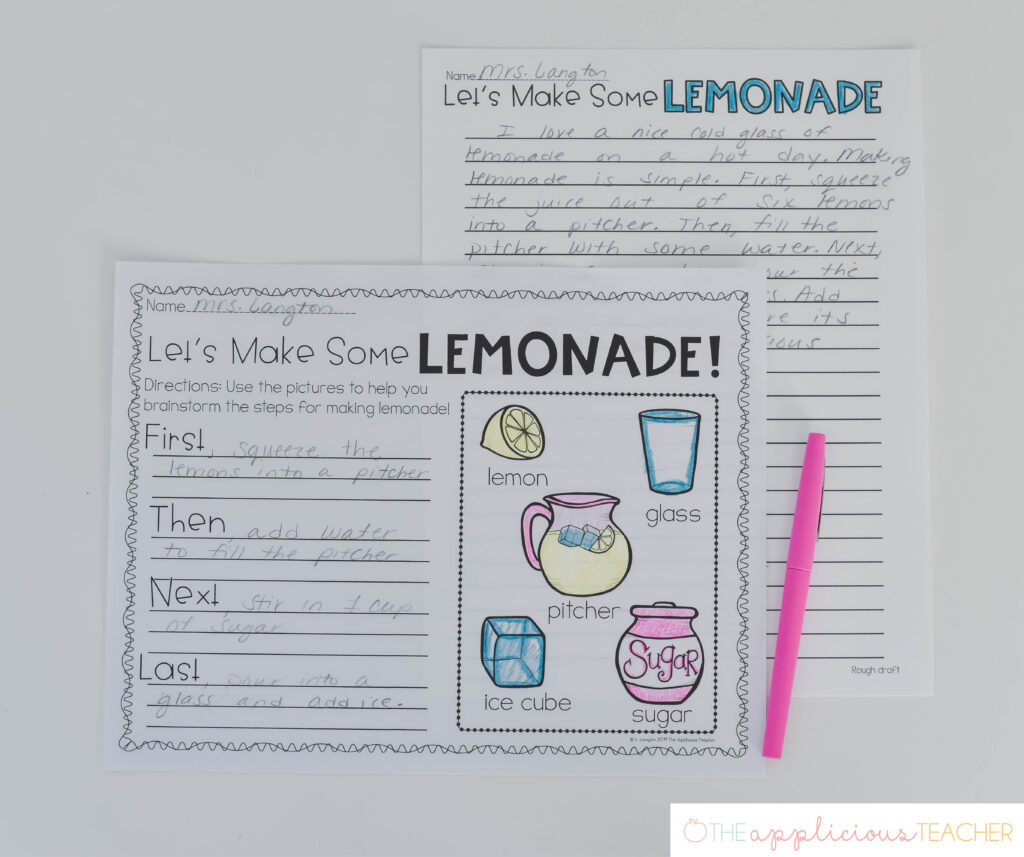
During the brainstorming section of your lesson, have students create a “word box” with content-specific words from the text or lesson that should be used in their writing (like we did here with this brainstorm how to make lemonade writing!). This way, students can reference the box as they work through the writing process. This works great if students are writing about science or social studies, and the vocabulary is a bit tricky.
5. Spell Check as Part of Your Editing Process
I know what you’re thinking about this tip… Duh, Leigh! But, do you have your students check their spelling when they are editing? I mean like truly-truly?
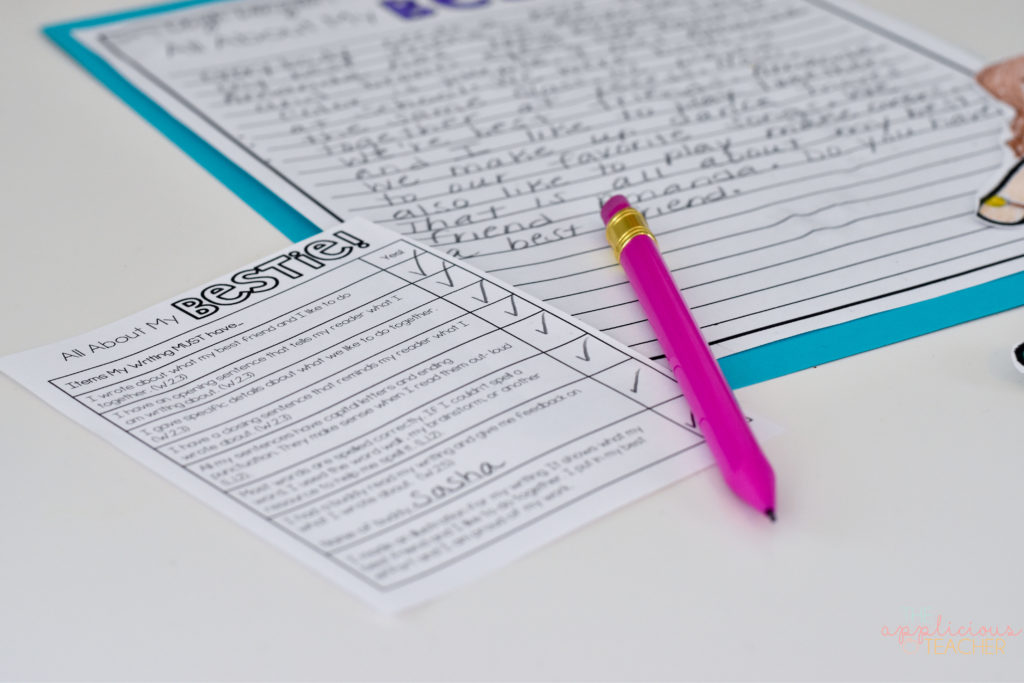
Have you shown them how to go back through their writing and look for spelling errors? Editing work is difficult, but when it’s broken up into chunks and modeled, you’ll be surprised how your students will actually start doing it!
Also, make checking spelling a part of your rubric. You’d be amazed at how much spelling improves when students see that they’re being graded on it!
6. Teach How to Use Reference Material
This next tip is an extension of the previous tip. Make sure to explicitly teach your students how to use reference material to check for spelling errors. It could be old-school like a dictionary or a dictionary online.
For a digital classroom, teach your students the power of a right click to use “spell check” in their classwork or Google slides.
7. Use a My Try/Teacher Try Chart
This next tip actually was shared over at Runde’s Room but it is such a good one, I’m sharing it again here!
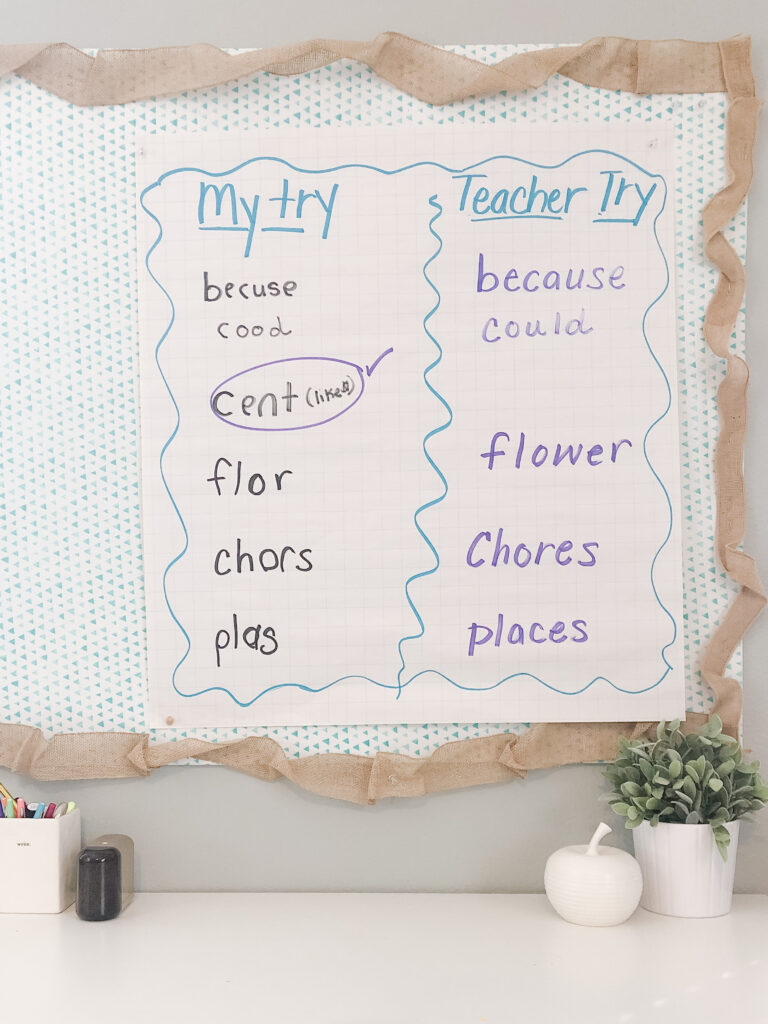
This chart is perfect to set up during your writing time. To use it, students write a word they are unsure how to spell under the “My Try” part of the chart. Then, when you get a chance, you write the correct word under the “Teacher Try” part of the chart. If the word is spelled correctly, you simply circle the word!
Why do I love this one? It encourages phonetic spelling and keeps the momentum of the lesson. Students aren’t sitting with their hands raised waiting for you to finally come over just to spell a word for them. Instead, they are encouraged to use their knowledge of words and sounds. It also allows you time to work through a writing conference without being interrupted a million times (no exaggeration!)
8. Reread Writing Out loud
Through the years, I have found a powerful way for students to find and fix mistakes in writing (spelling and otherwise). The funny thing is, it’s so simple… many of us forget to have our students do it.
That simple but powerful thing? Rereading their writing out loud, and often. When we’re really in the writing portion, we often encourage our writers to just.keep.writing. (Lucy Calkins would be so proud!)
But the truth is… this can lead to some serious mistakes that are a challenge to fix later. That’s why I like to have students stop every few sentences and reread what they wrote. Then, ask themselves:
- Does it make sense when I read it?
- Does it look right?
- Is my writing on topic?
Just doing this simple step really helps students “see” their errors, including their spelling ones!
9. Does it Look Right Method
This little method is simple and can really be applied across all grade levels. Here, if students are unsure about a word as they are writing, have them ask, “Does it look right?” Then, students should circle all the words that don’t look like they are spelled correctly but also if they are unsure how to fix them. Identifying misspelled words is a first step in encouraging students through the spelling stages.
See, former terrible speller 4th grade Leigh really leaned into this one and found that over time, she was able to recognize more and more mistakes!
When to be Concerned with Spelling
So, obviously, students will move through the different stages at different times. In general, most second-grade students are transitional spellers and are making progress towards conventional spelling. But there are times when issues with spelling can be clues to deeper issues.
When to be concerned:
- The student is not phonetically spelling (just writing random letters -after kindergarten!)
- The student can identify letter sounds in isolation but does not translate to writing (after Kindergarten!)
- Letters/words are poorly formed (after Kinder!) This could signal a physical issue like poor hand strength, inability to cross midline, or an inappropriate pencil grasp. You can read more about that here in this VERY helpful blogpost!
- The student can’t read back any of their writing immediately after they’ve written it or in the same writing session. This means there is no connection between the thoughts and the writing that was produced. This could signal deeper academic issues.
- Frequent letter reversals (3rd grade and above, 8 or older)
If you feel that one of your students isn’t progressing well in their spelling, be sure to talk to your reading intervention teacher or plan to start the RTI process. Your student may need more help outside the regular learning time. These types of disconnects can happen and often have phonics and phonemic awareness interventions attached. If you don’t have access to an intervention teacher or aren’t sure where to start, check out this extremely helpful website: InterventionCentral.org .
Supporting Spelling During Writing
Remember that the transition to conventional spelling varies on abilities, backgrounds, and exposure. Not all students in your class will make this transition at the same time. If you don’t have a strong phonics program, you may notice a bit of a disconnect between spelling on tests and spelling during writing. Writing is the ultimate tell-all. If students can do it during writing, then you know they’ve got it!
More Writing Support
Ready to support your students more as they write? Check out these other popular posts!

- 5 Easy Ways to Improve Student Writings
- 3 Ways to Get Students Excited About Writing (Yes it Can Be Done!)
- 5 Day Writing Routine Guaranteed to Make Better Writers
5 Day Writing Lesson Plan!

Enter your email to receive this writing lesson plan template straight to your inbox.
Did I mention it's completely editable? #teacherwin
Success! Now check your email to confirm and download your template!
